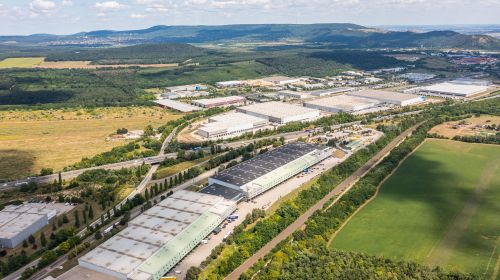Back in the CEE
Investment & finance
Alexander Klafsky, managing partner, FLE: We are not so well-known – we don’t like to be in the newspapers as much as others do. We tend only to be known by other market participants. LFPI, our parent company, is a spin-off from La Financière Patrimoniale d'Investissement SAS and is largely owned by the management. We currently have more than EUR 3 bln of assets under management, of which EUR 1 bln is equity invested in real estate. We are mid-sized, but one of the premier independent multi-strategy alternative asset managers in Europe. Our biggest real estate fund owns more than EUR 2 bln of real estate. Our investor base is very stable and trusting when it comes to following us into new markets – and this base has been built over twenty years. Mostly these are pension or insurance funds, which requires us to be long-term oriented and conservative. We are building up a portfolio that is cash-flow oriented and paying them regular dividends. We are not as large as some of the others; we are however constantly growing. We see our investment targets mostly in the core+ segment in exceptional locations that are suitable for investments of ten years or more.
So which kind of assets do you normally buy and where?
The assets that FLE GmbH is managing are located in Austria, Germany and the CEE region. It is mostly offices that we invest in, but we do also buy hotels and some retail. An asset class we appreciate are mixed-use properties, like Wratislavia Center in Wrocław. What we like about it is its inherent risk diversification. Overall, our portfolio comprises app. 60 pct offices and 15 pct hotels.
Which countries are you looking at?
We have looked at some CEE countries that are interesting in terms of the price/quality ratio they offer. What we like about Poland is that it has a very similar structure to Germany. It is the only country in our hemisphere with interesting cities outside the capital, like e.g. Wrocław, the location of our first acquisition in Poland. It has a population of around 600,000, lots of students, a business friendly environment, low unemployment, a dynamic local economy, an already decent and increasingly growing investment market – so there are lots of ingredients for a successful investment. Remarkably, we didn’t start with Warsaw, as some other investors tend to do. The office market in the capital city is not simple at the moment – vacancy is slightly decreasing, but still relatively high, and the development portfolio there is very large. Wrocław is better from a risk-investment perspective. Having said that, we possibly might not be investing again in Wrocław in the near future, because for us risk diversification is the key. If we do, it would probably be a small asset. It is much more likely, however, that we will be investing in different towns and cities. It would be more interesting for us to go into such locations as Poznań, Kraków or the TriCity.
Would this be for the same kind of properties you have previously bought?
Our perspectives in the CEE region are very similar to what we are doing in Austria and Germany, where we hold long-term investments in multi-tenant offices. The locations need to have very good infrastructure. Our hotels must be in city centres, as Wratislavia Center is. All our assets have a similar profile, but as a matter of basic strategy they are geographically spread over our target region and their sizes are adapted to the respective city to diversify the risks.
You used to only invest in Germany and Austria. Why have you changed tack?
It was always our intention to invest here. But then Lehman Bros and the credit crunch came along, so we postponed our plans and invested in Germany instead, which was not even on our original agenda. At that time there was hardly any liquidity in the CEE market and leasing was very challenging. Now we are finally able to implement our original plan. We started doing this in Budapest in 2016, when we bought Office Garden I at the end of that year and in 2017 we transferred it into our main fund. At the end of last year, we also bought two additional office properties, Residence 1 and 2, in that city. Budapest is currently a good market for landlords with high leasing demand, low vacancy and a moderate development pipeline. Therefore it is both a safe and secure market for owners.
What about your plans for Poland? And are you looking at any other markets in the region?
For Poland we have a very long term perspective. We will be targeting an aggregate investment of EUR 50 mln this year, but in the long term we are aiming for it to be our second largest market after Germany. For now, however, our focus is on Budapest. As for Prague, this is a bit too expensive for us currently and the yields are too low. We would really love to invest there at some point – it ticks all our boxes for being a safe and stable market, except the key one of the pricing.





















































